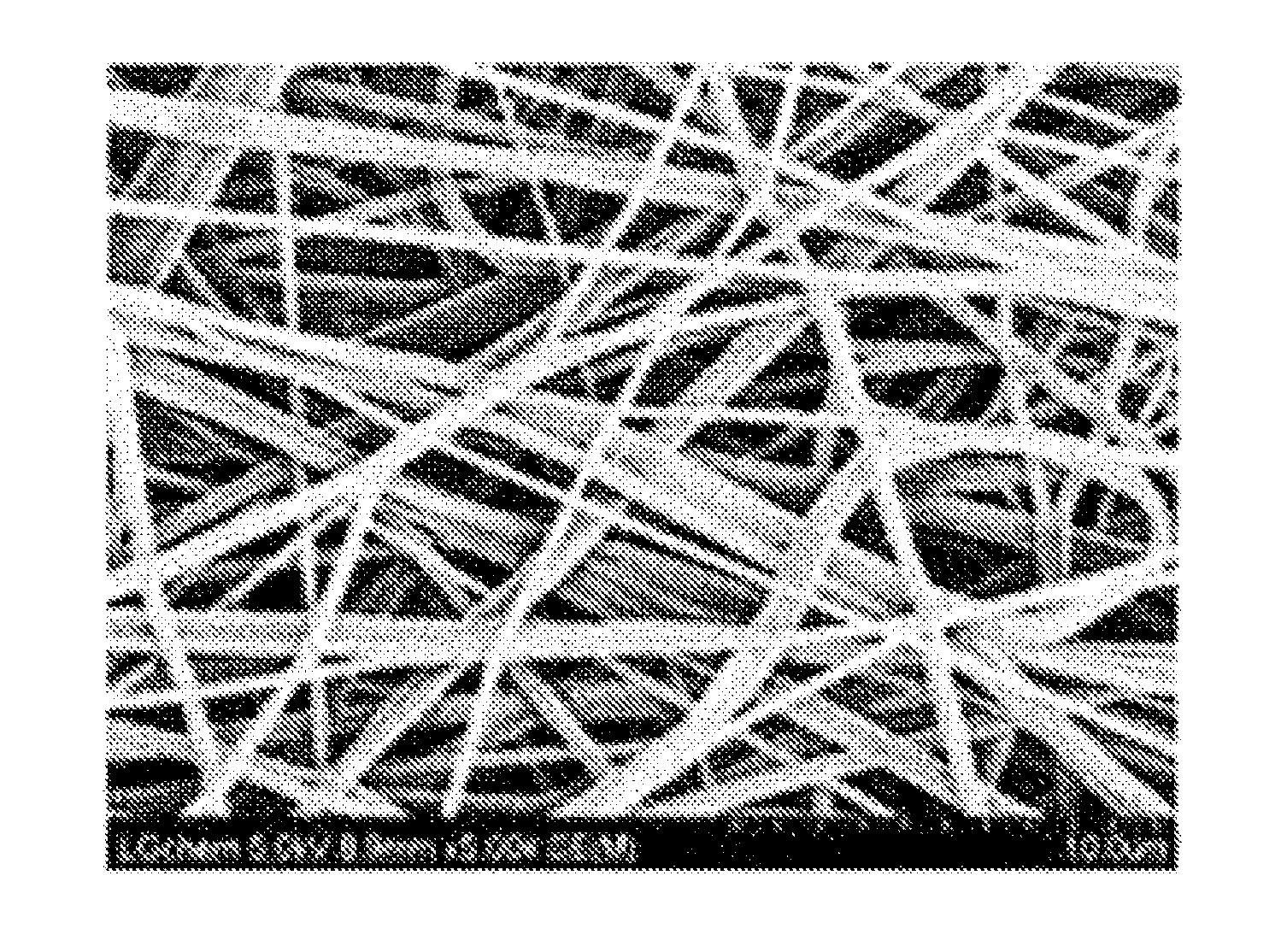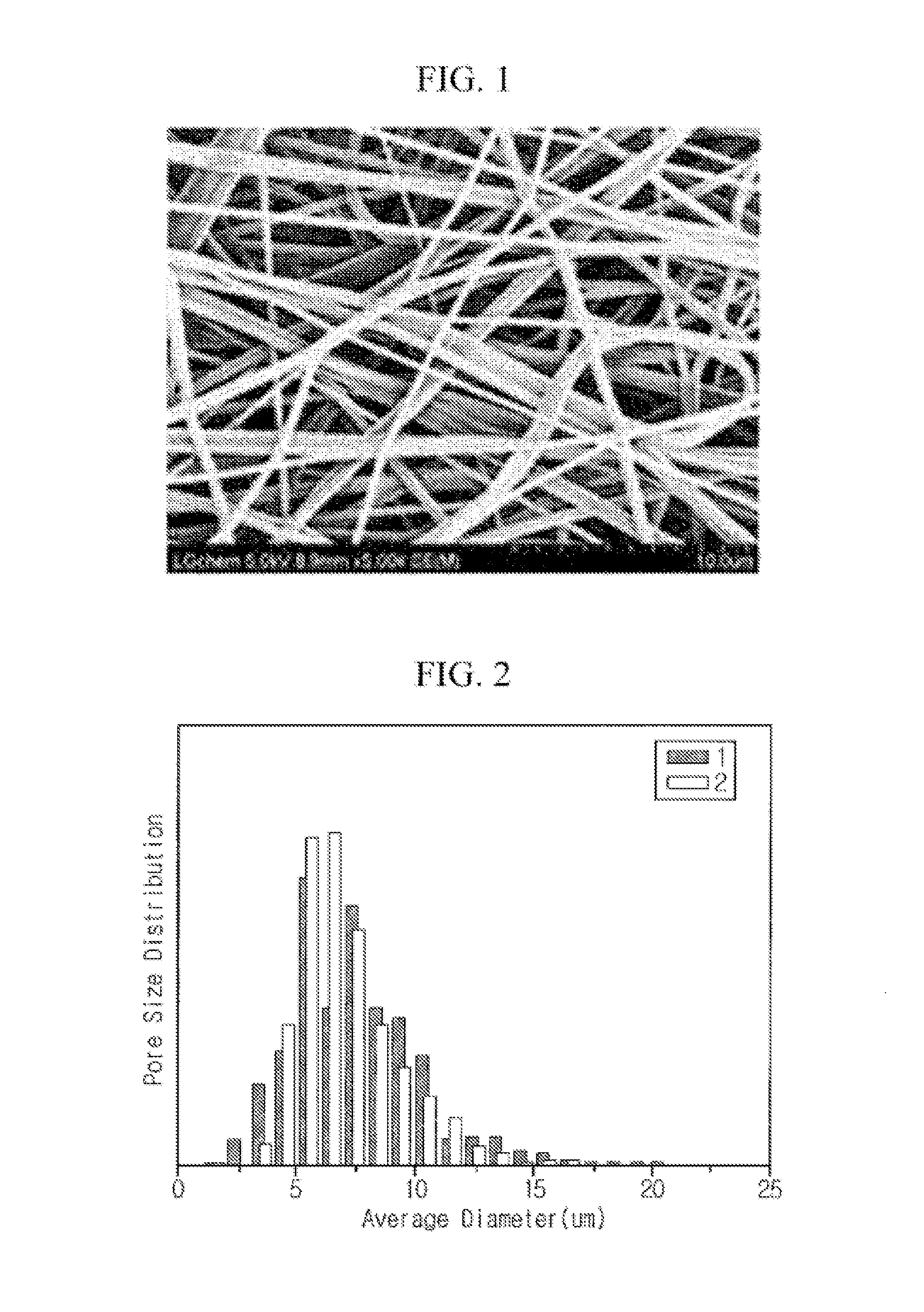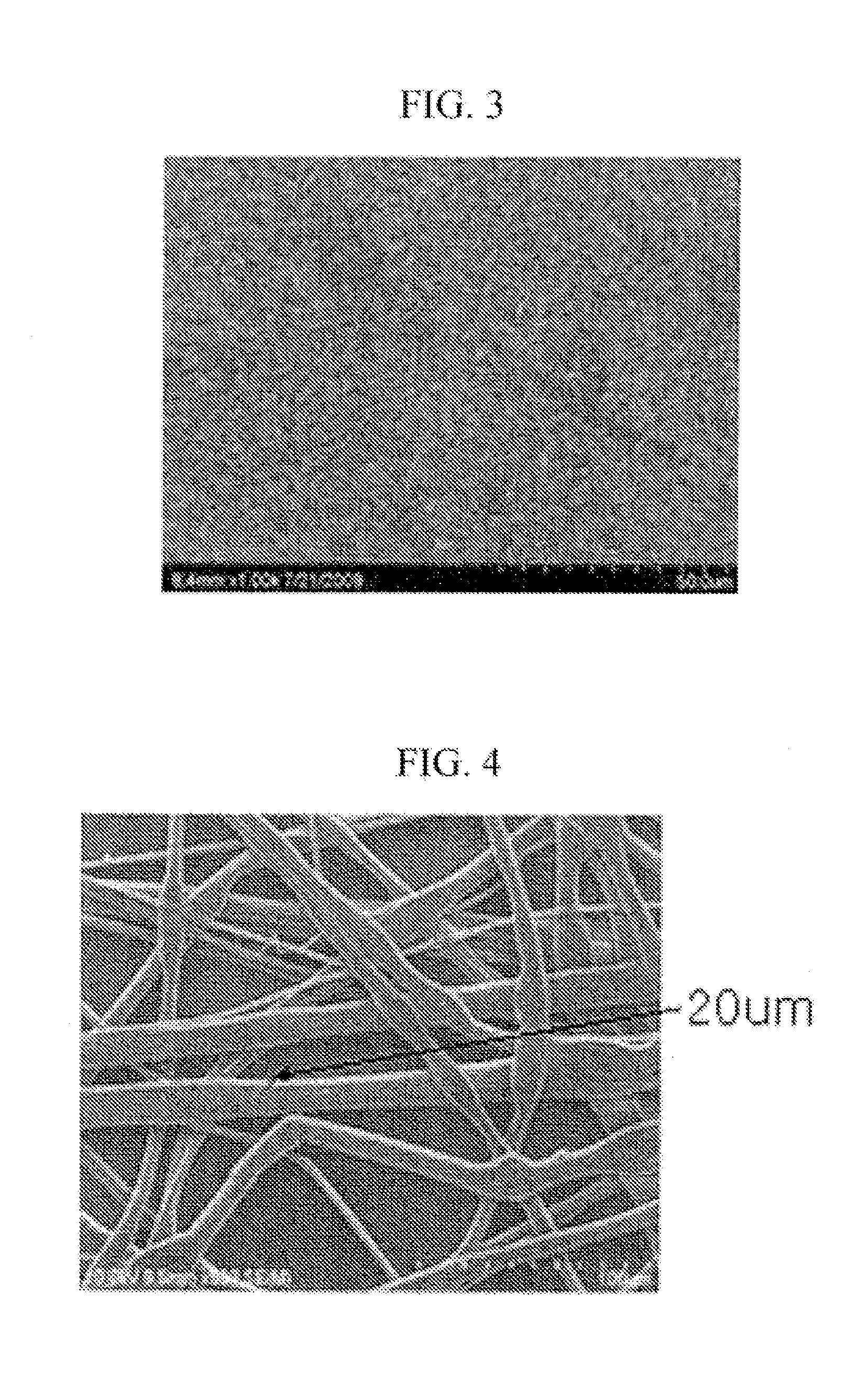Separator Having Porous Coating Layer, Manufacturing Method Of The Same, And Electrochemical Device Having The Same
a technology of porous coating layer and separation device, which is applied in the direction of sustainable manufacturing/processing, non-aqueous electrolyte cells, cell components, etc., can solve the problems of insufficient discharge capacity, complex process for manufacturing such batteries, and relatively low battery capacity of lithium-ion polymer batteries, etc., to prevent the generation of leak current without increasing the loading weight of the porous coating layer, and prevent the effect of short circui
- Summary
- Abstract
- Description
- Claims
- Application Information
AI Technical Summary
Benefits of technology
Problems solved by technology
Method used
Image
Examples
example 1
[0055]Preparation of Separator
[0056]PVdF-CTFE (polyvinylidene fluoride-chlorotrifluoroethylene) copolymer and cyanoethyl pullulan were respectively added to acetone at a weight ratio of 10:2 and dissolved at 50° C. for about 12 hours to produce a polymer solution. BaTiO3 powder was added to the produced binder polymer solution so that a weight ratio of the binder polymer to BaTiO3 is 10:90, and then BaTiO3 powder was pulverized and dispersed by ball milling for 12 hours or more to produce slurry. In the produced slurry, the diameter of BaTiO3 may be controlled in accordance with the size (diameter) of beads used for the ball milling or the time taken for the ball milling, but the BaTiO3 powder was pulverized into about 400 nm into slurry in the example 1 of the present invention. The slurry produced as mentioned above was applied to a polyethylene terephthalate non-woven fabric with a thickness of 12 μm by dip coating while varying a loading weight thereof. The used non-woven fabric...
PUM
 Login to View More
Login to View More Abstract
Description
Claims
Application Information
 Login to View More
Login to View More - R&D
- Intellectual Property
- Life Sciences
- Materials
- Tech Scout
- Unparalleled Data Quality
- Higher Quality Content
- 60% Fewer Hallucinations
Browse by: Latest US Patents, China's latest patents, Technical Efficacy Thesaurus, Application Domain, Technology Topic, Popular Technical Reports.
© 2025 PatSnap. All rights reserved.Legal|Privacy policy|Modern Slavery Act Transparency Statement|Sitemap|About US| Contact US: help@patsnap.com



